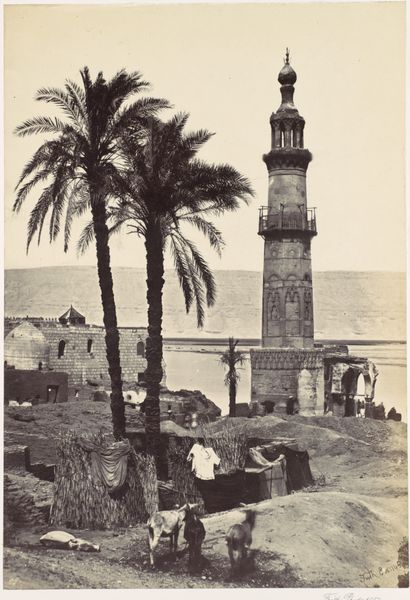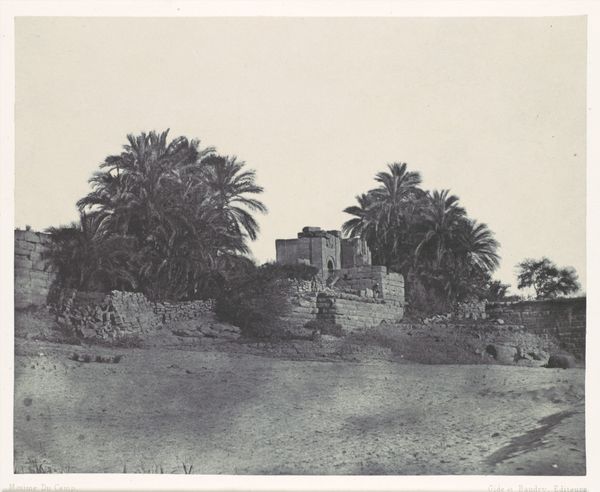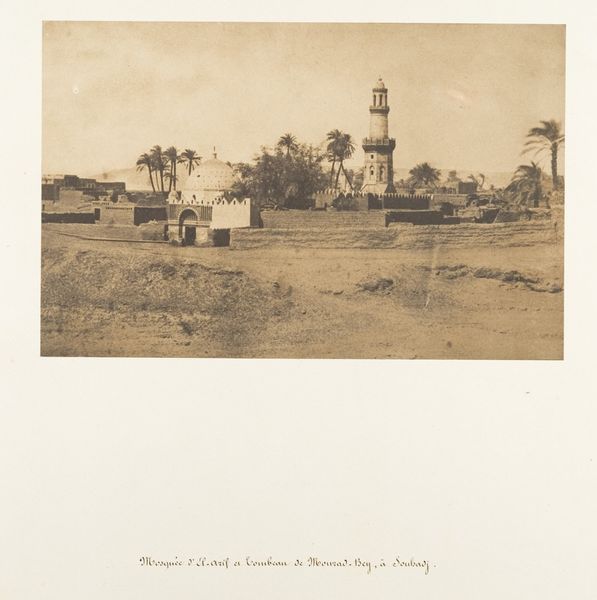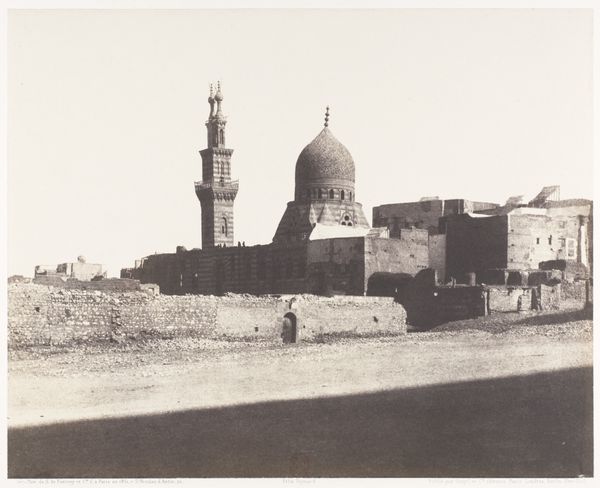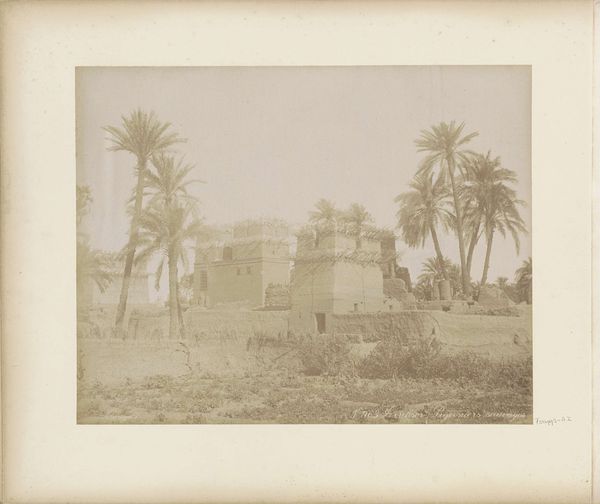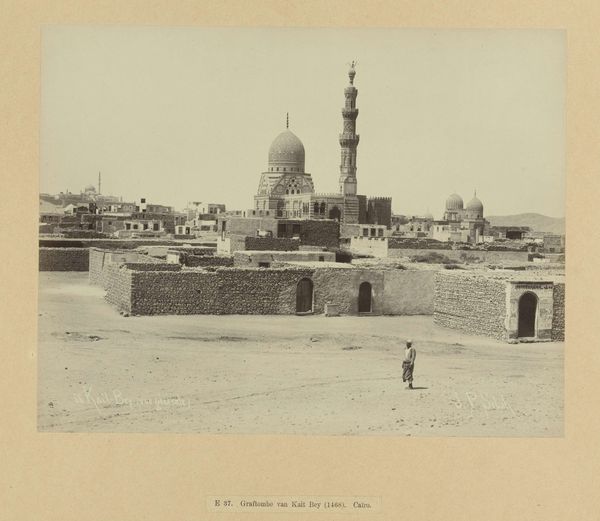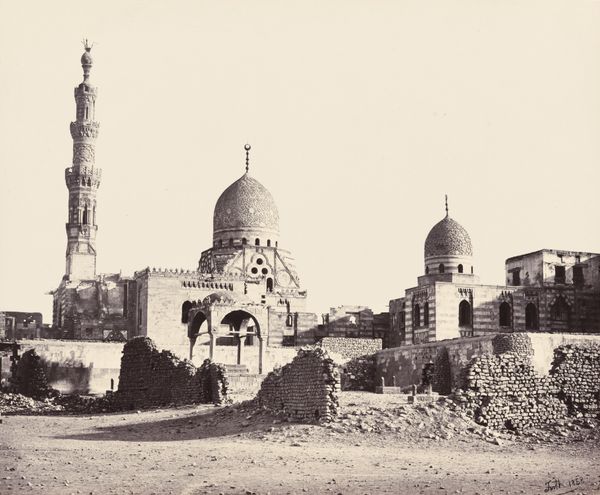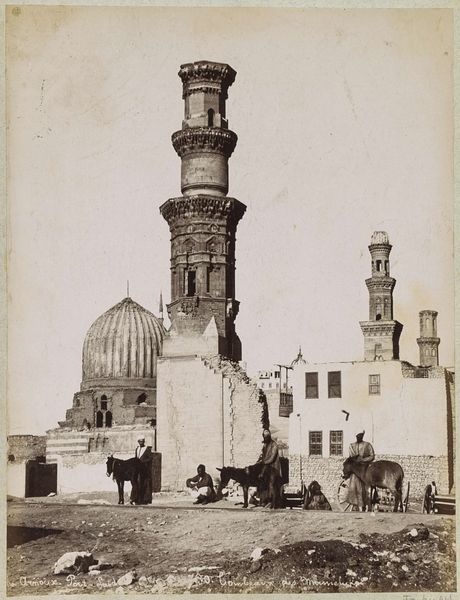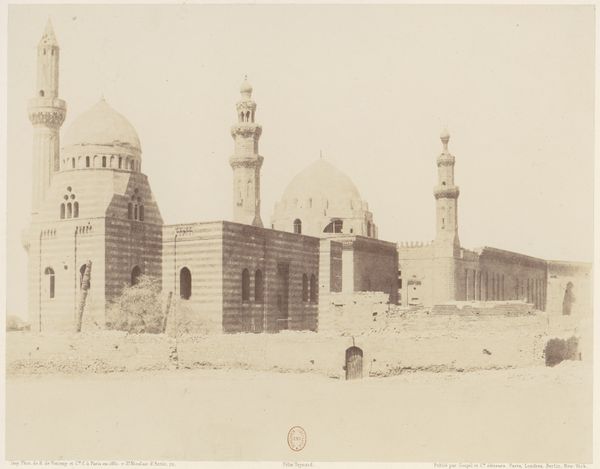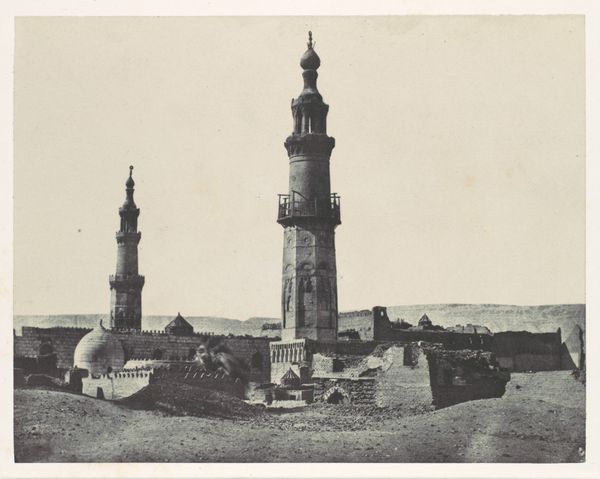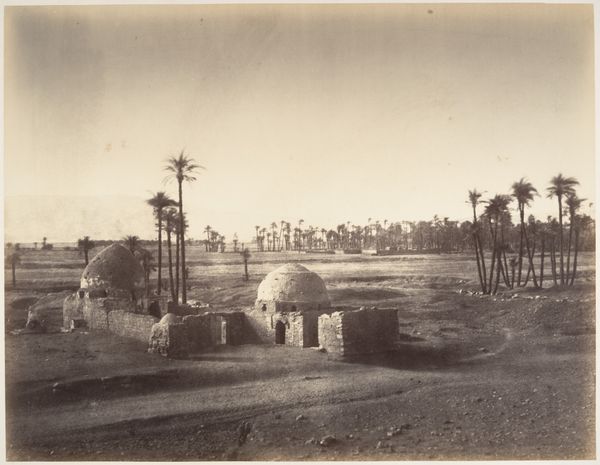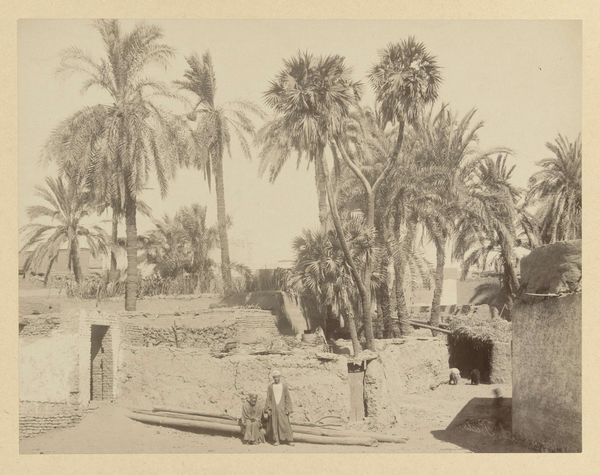
Souâdj, Cimetière Musulman et Tombeau de Mouràd-Bey 1851 - 1852
0:00
0:00
photography, albumen-print, architecture
#
landscape
#
photography
#
orientalism
#
cityscape
#
islamic-art
#
albumen-print
#
architecture
Dimensions: 24.0 x 30.0 cm. (9 7/16 x 11 13/16 in.)
Copyright: Public Domain
Félix Teynard made this photograph, "Souâdj, Cimetière Musulman et Tombeau de Mouràd-Bey," using the calotype process, a relatively early photographic technique. Consider the historical context: Teynard, a French photographer, created this image during a time of increasing European interest in and colonial expansion into the Middle East. This photograph can be viewed as an example of orientalism, which is how Western artists and scholars often depicted Middle Eastern cultures as exotic, mysterious, and often inferior. The image captures a Muslim cemetery, including the tomb of Mouràd-Bey, in Egypt. How does Teynard frame this space? Is it an attempt to document, or does it exoticize a foreign land and culture for a European audience? Think about the power dynamics inherent in who is looking and who is being looked at. Teynard’s photograph invites us to reflect on the gaze of the colonizer and its impact on the representation and perception of non-Western societies.
Comments
No comments
Be the first to comment and join the conversation on the ultimate creative platform.
